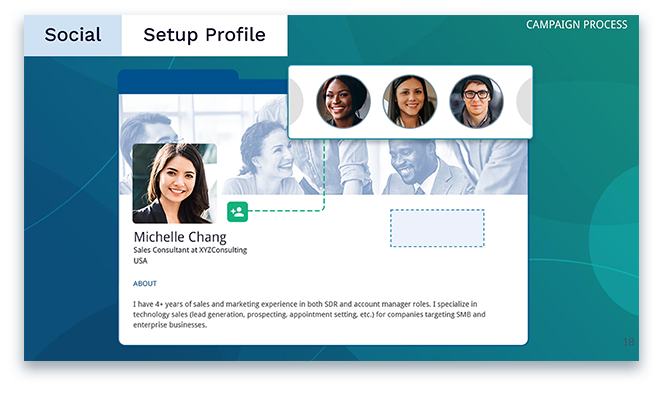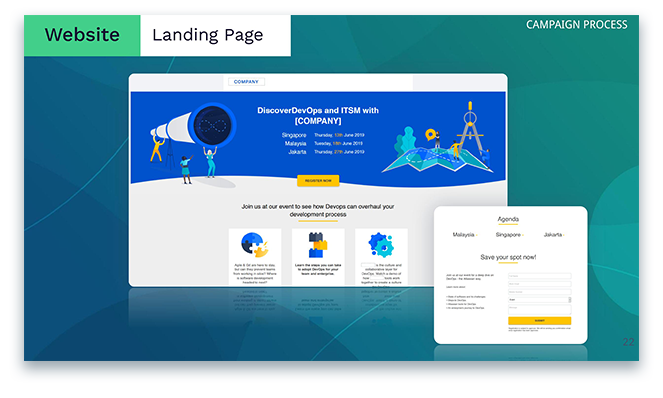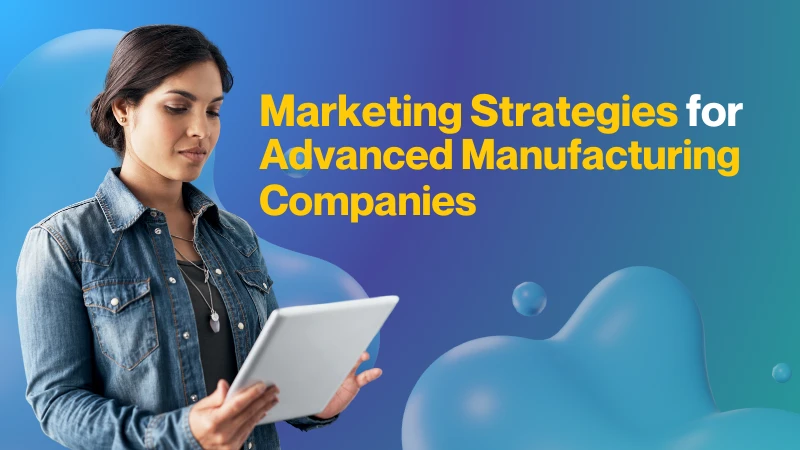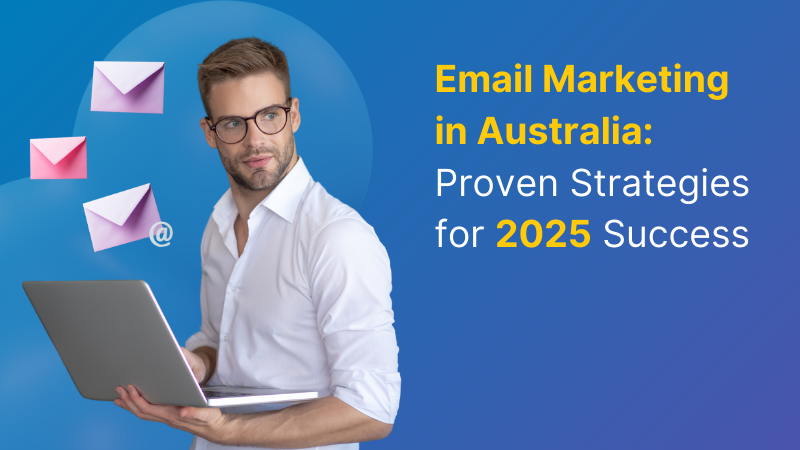Webinars are an excellent lead generation platform for many B2B companies, and this is especially true for firms that specialize in IT solutions.
They can generate new leads, nurture ones that are already in the pipeline, and create buzz for the brand.
This article explores a real-life example of how an Asian IT firm we collaborated with used the webinar approach to create new markets of opportunity and supercharge their marketing.
The Objective
The firm had four campaign goals:
- Hosting the event
- Running the post-event campaign
- Profiling the database
- Engaging new prospects
All of these objectives were riding on one critical component: getting people to attend the event in the first place. This is where we were able to collaborate actively.
Customer Profiling
The first step was to analyze the company’s ideal customer profile.
All campaigns ride or die by customer profiling, and this is why account-based marketing (ABM) has gained major strides against more traditional marketing methods.
It doesn’t matter if there is an existing database of possible leads or if a firm has to build one from the onset, there has to be an active attempt to qualify and screen the leads before the first touchpoint. This allows marketers to create personalized solutions and methods that resonate well with the prospect.
After analyzing the target customer persona, we were then able to start crafting a list and marketing collaterals to go along with the lead generation.
Marketing Collaterals
We used a combination of email, appointment setting, landing pages, and social media marketing to generate the attendee list for the webinar.
Email Campaign
Four distinct email templates were used in the campaign.
The General Invitation Email
The general invitation tells your prospect about the event and provides necessary details about what to expect. It also contains the pertinent CTA to get your prospects to sign up.
As an incentive – and everyone should do this – we offered special coupons to the first 50 registrants to the webinar. This allows people to have a sense of urgency and adds to FOMO to speed up the process.
The VIP Email
This particular email was sent to a more select group of people who needed that “special touch.” In many ways, it’s akin to the general invitation email, but it differs in a sense because it actually refers to the prospect as a VIP, making them feel a little more special.
In a way, we told these prospects that they had been pre-selected to join the event because of their status and reputation.
This is a good way of providing prospects a more bespoke approach to invitations.
The Referral
A referral email was sent to people who weren’t replying or seemed disinterested in the webinar.
It serves to have the initial invitation forwarded to other people in a prospect’s contact list so that a firm doesn’t waste the leads they have.
The Follow-up
Not everyone checks their mail regularly, and there is a chance that a prospect has your email buried in their inbox.
A follow-up email is necessary to remind people of the event again and reconnect with prospects that haven’t been replying.
You can send the follow-up email a couple of days after the initial email.
Telemarketing Campaign
While the email campaign was ongoing, we implemented a telemarketing campaign to serve as another medium for webinar lead generation.
We used a brief and concise script that covered the following:
- A brief introduction
- A quick check to determine if we’ve contacted the right person
- Concise invitation along with other details of the event
However, just as with email and other marketing campaigns, we made sure that they had follow-ups if the response was one that we did not anticipate.
If they weren’t able to go, we asked if there was someone else in the department who could make it. We also made sure that we checked on how their IT was implemented to update our profile on the company.
An important thing to keep in mind is that you need to target people in an IT department in higher positions before moving on to the juniors.
If there’s no one available, you could ask who else you could forward the information to.
Social Media Campaign
LinkedIn is a critical part of your B2B lead generation strategy because it is the largest professional social networking platform. Also, it is one of the most practical channels for generating webinar leads.

To use LinkedIn, we created and optimized the profile of one of the officers-in-charge of the event and crafted quick invite messages that we could send out to people on the network.
After sending the quick invites, we threw in a message asking them if they would be interested in the webinar; this included a freebie – just like in the email and a good CTA for them to register.
To keep the conversation running if they weren’t able to attend the event, we asked if they would be interested the next time around.
Landing Page
Lastly, we built a custom landing page that was able to take in registrations and provide pertinent information depending on which location the participant would like to join.

The technique with landing pages is to keep it as short possible with a clear call-to-action. Forms should be pre-filled and concise as well; the goal is to convert the viewer quickly and efficiently.
Tools
We ran with the Callbox Pipeline along with HubSpot for form fills. The two are a great combination for lead generation. We also had lead generation professionals and a team of other specialists to support the project.
The Results
We had 1,450 accounts to work with, which totaled to 2,157 contacts since we aimed to reach about two people or active accounts per firm.
Out of the 1,392 accounts that were touched, we averaged 2.71 touchpoints for each, an indicator of how engaging our campaigns were.
We had a total of 227 MQLs with 125 coming in from calls and the rest from LinkedIn (102). LinkedIn was so powerful that we were making 36.1 percent of our connections on the platform.
Needless to say, the webinars that were held and hosted for different parts of Asia were extremely successful.
This particular case study is enough proof that with proper systems in place, you can actively leverage webinars to create new marketing campaigns that generate leads for your pipeline.
Marketers also have a choice to set them up in-house or partner with a lead generation agency such as Callbox to make things easier and more efficient.
Whichever option you pick, what’s critical is to keep lead generation ongoing to guarantee your company’s growth, even in these times.













